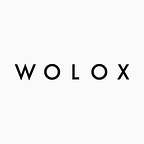What You Should Know About Product Building
Designing an interface that simplifies a set of complex actions, developing an interactive prototype to test a specific feature, improving conversion rates of a sales interface or proposing improvements to attract more users, all of these tasks are within the scope of the Product Building process: delivering solutions that integrate the points of view of the client, the business and the team carrying it out.
What is Product Building?
The definition of this discipline reflects its main goal: to build a product. But building a product with a specific focus: the user.
Through the combined contributions of different disciplines, the objective of the Product Building process’ is to find a solution that integrates the requirements of the entrepreneur, the business objectives and the end users’ needs. The design, communication and development teams are responsible for accomplishing these objectives.
Every month, Wolox gains new clients whose goal is to develop their product. When an entrepreneur does not have a working product, we guide him through the Product Building process, which is aimed at designing what is called an MVP (Minimum Viable Product).
An MVP is a product’s first version that only includes the essential features it needs to be launched to the market. This is an efficient way to validate the product with real users and gain valuable information about the market.
Product Building is associated with:
· User Interface design patterns
· UX analysis techniques
· Basic training in graphic design and systems design
· Management skills
· Business knowledge
· Creativity.
This is a very rich discipline. It capitalizes on the specific knowledge of each participant of the process, boosting the team’s divergence and innovation abilities, generating more and better solutions.
The Product Building Process
A series of interviews are conducted with the entrepreneur in order to evaluate the product’s expected features and the goals it must achieve.
Situations that have not been previously foreseen, improvement opportunities and reviews of particular features all come up during this stage, giving the client the opportunity to redefine the goals of their action plan. This could also impact in the “go to market” strategy, offering more options for the entrepreneur.
All of this information is finally revealed in prototypes that present the product’s main features, propose a way to interact with it, and establish the internal processes the system must follow and how these processes should influence the user’s approach when using the platform.
At Wolox, we work under the Scrum methodology, which proposes the adoption of an incremental development strategy instead of planning and executing the product fully. The client then has the option of fragmenting the solution into smaller segments. These are partially functioning versions available long before the solution is fully implemented.
Thus, the product can be tested and improved before reaching its final form.
An average Product Building process takes around 3 client meetings and 2 or 3 internal team meetings where, between one meeting and the next, research is conducted and partial solutions are developed. The process, from beginning to end, is estimated to take around 1 month.
What is interesting about Product Building is that it synergizes activities that would otherwise be individually distributed among the different aspects involved, making the process slower and less efficient.
Building relationship with the client
Product Building offers effective solutions provided that a good evaluation is made, making the relationship with the client extremely relevant. The client proposes product features so that we define the process that can fulfill both the user’s needs and the business’s purposes.
This is a process characterized by constant interaction with the client, where dialog should be continuous in order to fully understand their ideas. It is best to conduct it in a comfortable environment and to empathize with the client. The assessment results will be more productive, the more open the client is and the more focused the team is.
Teamwork
The Product Building units is nurtured by teamwork, thus a dynamic organizational structure that allows for easy communication between the different areas is needed in order to progress quickly. There will be more solutions with better quality, the more the team has an interdisciplinary composition.
Although the Product Building process takes only a small portion of the time invested in the project, the content it generates, guides the work that follows. Therefore, it takes a team that is close, skilled, and focused on providing solutions for the client to complete the task.
Even though not all software factories have a Product Building area, a good start is combining the efforts from the areas involved in order to find a solution that contributes to creating a product that captivates the user, since a product cannot exist without a user. A successful product is not one with the best technological implementation but one that is able to fulfill the needs of the people for whom it was intended.
Posted by Emmanuel Schönfeld Estani (emmanuel.schonfeld@wolox.com.ar)
